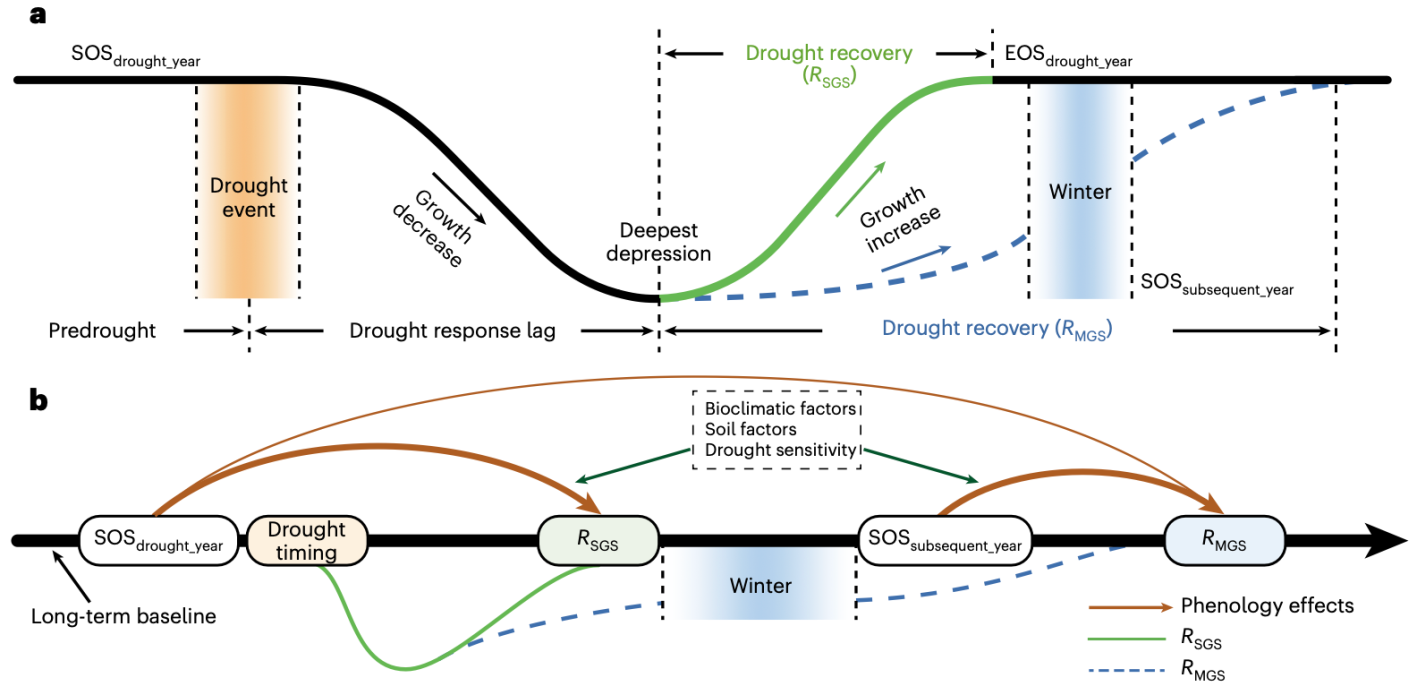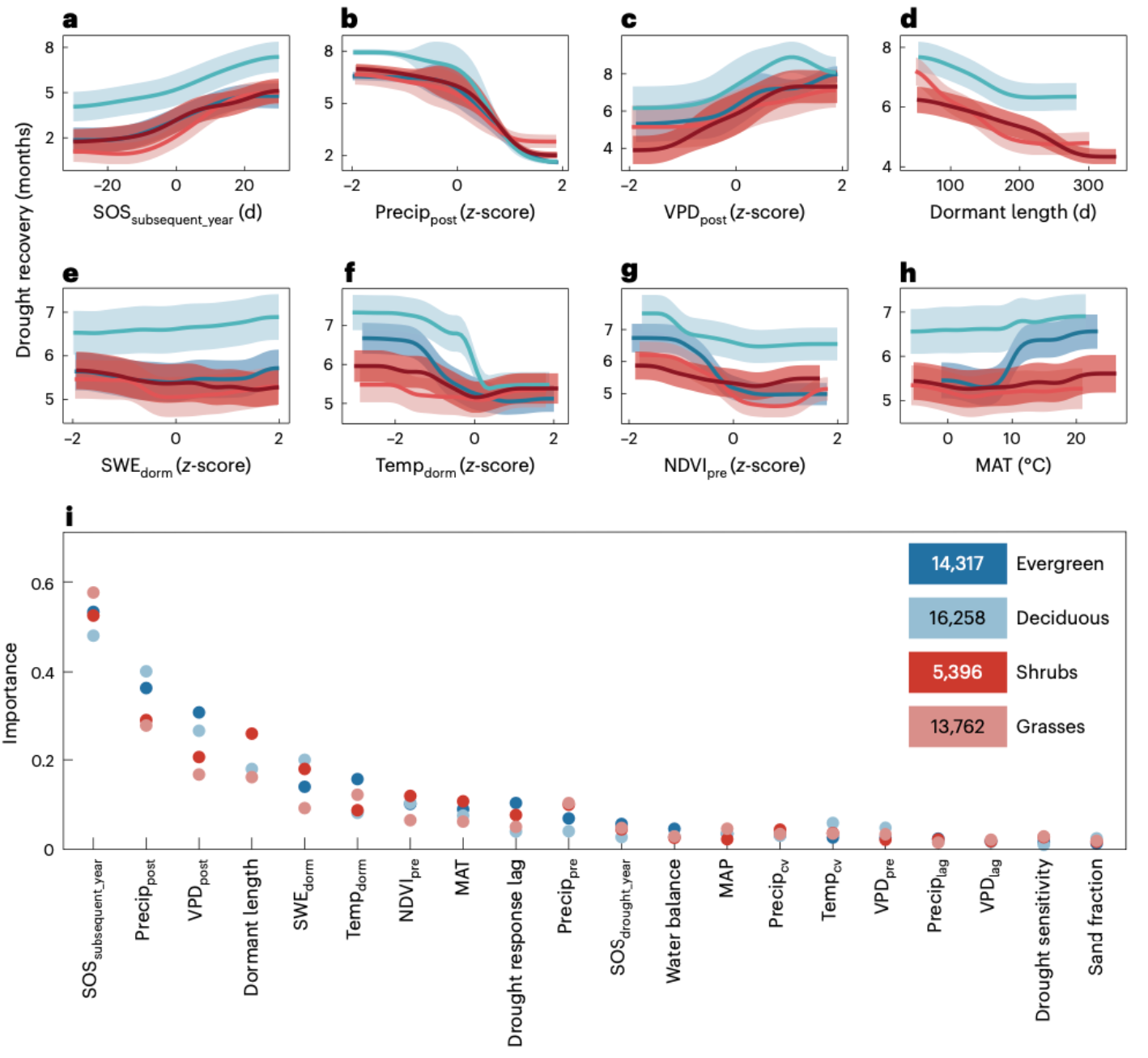Professor Xiuchen Wu’s Team From the Faculty of Geographical Sciences Reveals the Influence Mechanism of Vegetation Phenology on Vegetation Drought Recovery in the Northern Hemisphere
Rapid climate-warming has significantly altered vegetation phenology and led to increased extreme drought events. The influence mechanism of climate change on vegetation phenology and the recovery process of different ecosystems after extreme drought have been studied deeply. However, how vegetation phenology changes affect vegetation drought recovery is a key scientific problem that has been neglected for a long time.
In this study, two main models of drought recovery were proposed for the mid-high latitude ecosystem in the northern hemisphere (Figure 1) : 1) recovery during the growing season in dry years; 2) After the drought, the second annual growth season will recover. Furthermore, the relationship between drought recovery time and extreme drought occurrence time was quantified. It was found that more than half of the terrestrial ecosystems suffered from extreme drought in the early growing season, the canopy greenness and productivity of vegetation could not fully recover in the growing season of dry years.

Figure 1
More importantly, the effects of spring phenology on drought recovery time of ecosystems were revealed in the two recovery models. In the case of growth season recovery in dry years, both early and late spring phenology will prolong the drought recovery time of vegetation. This may be attributed to the complex effects of vegetation phenology and drought occurrence time and the relative contributions of biological carryover effect and biophysical feedback effect. When extreme drought occurs in summer, the advance of spring phenology will promote the growth of spring vegetation, increase the evapotranspiration of ecosystem, and then lead to the decrease of soil moisture and prolong the drought recovery time of vegetation. When extreme drought occurs in spring, the biological delay effect of phenological change on vegetation growth is stronger than the biophysical feedback effect of phenological change. In the case of the recovery of the second annual growing season after drought, the advance of the spring phenology of the second year can significantly promote the recovery of vegetation. The biological delay effect of vegetation phenology has a decisive influence on the recovery of vegetation drought, even more than the influence of various climatic factors (Figure 2).

Figure 2
The findings were published online in the journal Nature Climate Change on January 19, 2023. The first author of this paper is Li Yang, a 2017 PhD candidate in the Faculty of Geographical Sciences, Beijing Normal University, and the corresponding author is Professor Wu Xiuchen. Academician Piao Shilong and Professor Liu Hongyan from Peking University, 2015 Master student Zhang Wen from the Faculty of Geographic Sciences of Beijing Normal University (currently studying for her doctorate at the University of Arizona), and several scholars from the United States, France, Spain, Sweden and other countries participated in the research. In an accompanying commentary on the paper, Dr. Lixin Wang from Indiana University and Purdue University, Indianapolis, praised the study for revealing the cascading effects of vegetation phenology on vegetation drought recovery.
Reference:
https://www.nature.com/articles/s41558-022-01584-2
https://www.nature.com/articles/s41558-022-01579-z


